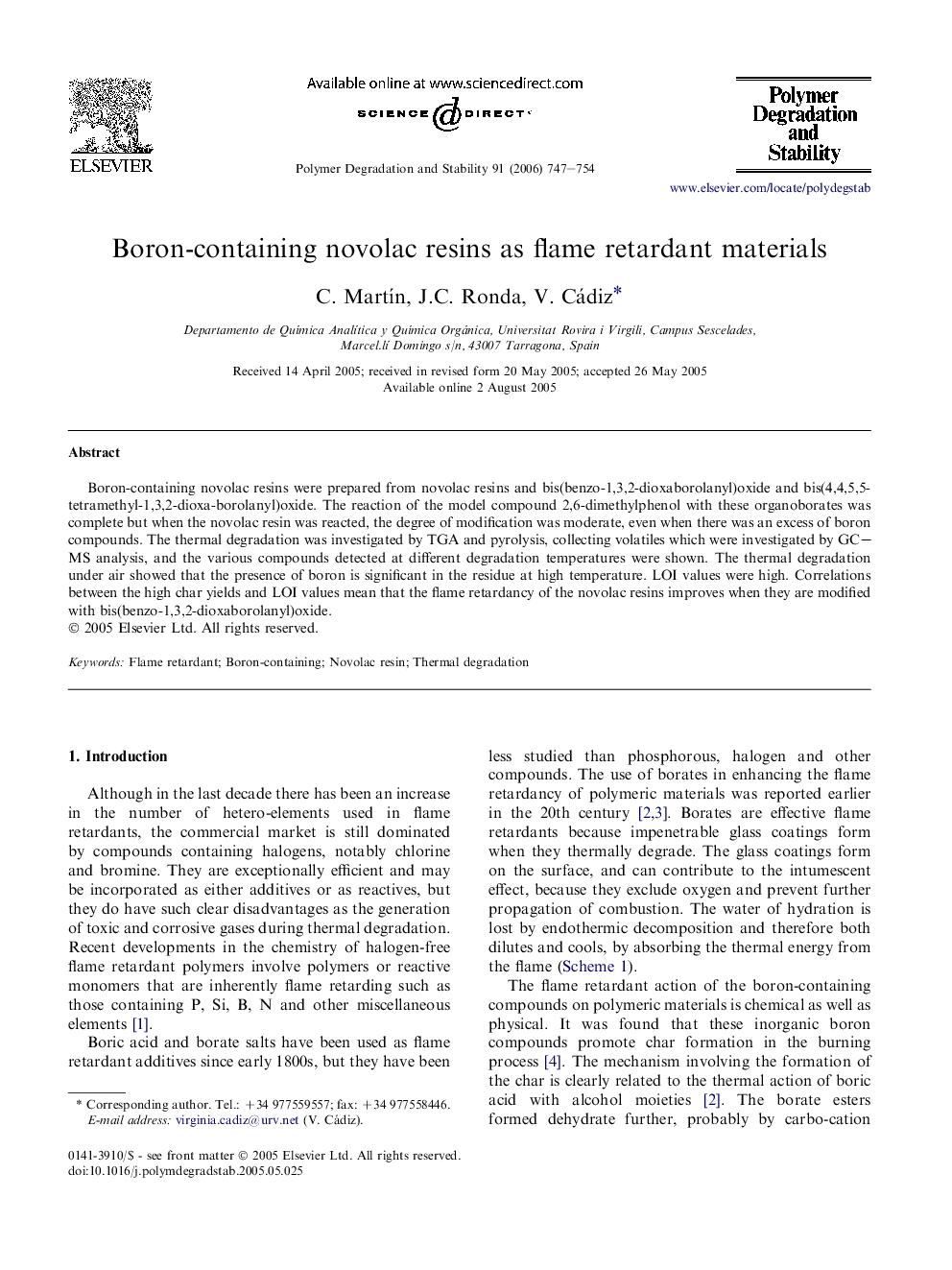| Article ID | Journal | Published Year | Pages | File Type |
|---|---|---|---|---|
| 5204873 | Polymer Degradation and Stability | 2006 | 8 Pages |
Abstract
Boron-containing novolac resins were prepared from novolac resins and bis(benzo-1,3,2-dioxaborolanyl)oxide and bis(4,4,5,5-tetramethyl-1,3,2-dioxa-borolanyl)oxide. The reaction of the model compound 2,6-dimethylphenol with these organoborates was complete but when the novolac resin was reacted, the degree of modification was moderate, even when there was an excess of boron compounds. The thermal degradation was investigated by TGA and pyrolysis, collecting volatiles which were investigated by GC-MS analysis, and the various compounds detected at different degradation temperatures were shown. The thermal degradation under air showed that the presence of boron is significant in the residue at high temperature. LOI values were high. Correlations between the high char yields and LOI values mean that the flame retardancy of the novolac resins improves when they are modified with bis(benzo-1,3,2-dioxaborolanyl)oxide.
Related Topics
Physical Sciences and Engineering
Chemistry
Organic Chemistry
Authors
C. MartÃn, J.C. Ronda, V. Cádiz,
